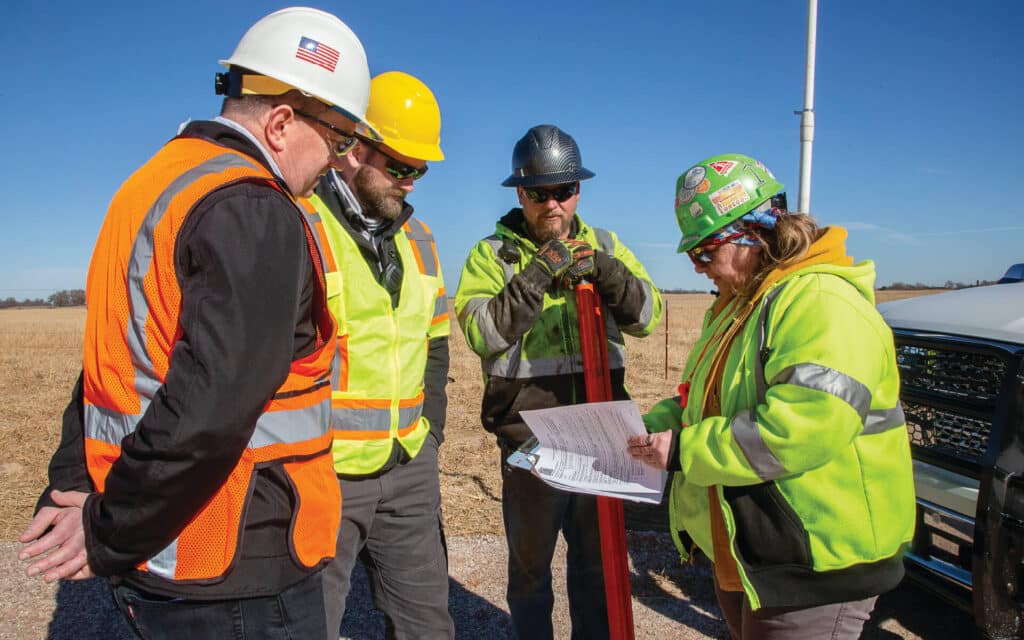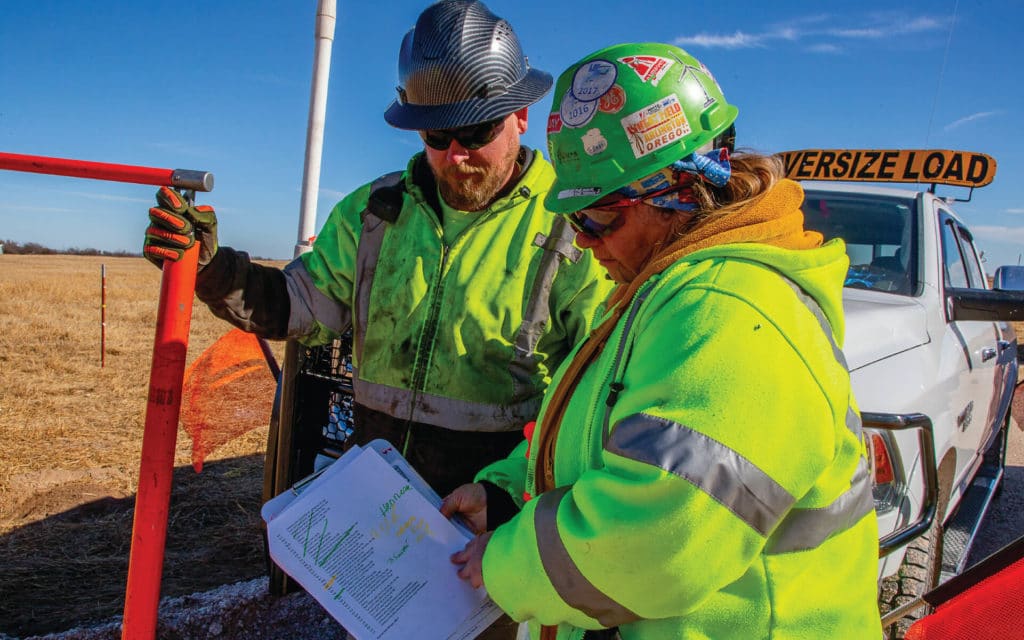The pre-trip meeting is an essential part of every Oversize Load move
This meeting is an opportunity to get to know your move team and go over move details. It gives you time to discuss logistics such as team member responsibilities, the route survey, and emergency protocols before the move begins.
Pre-trip meetings are typically conducted just prior to the move itself, on the same day. If the move is very complex, however, a more general meeting might be scheduled on another day prior to the move. Regardless, your team should hold a pre-trip meeting every morning if the move will take place over multiple days.
Who should attend the pre-trip meeting?

Depending on the route and restrictions, others may need to be present or on the phone during the meeting, such as representatives from law enforcement, public utilities, bucket truck or repair companies, or state or local permitting bodies.
What should be covered in the pre-trip meeting?
We recommend that you use a pre-trip meeting sheet to guide your discussion. You can download one here.
Four essential activities take place during the pre-trip meeting:
- Identification of team members and roles: The pre-trip meeting should always start off with introductions. In order for communication to go smoothly throughout the move, you should know each person by name, voice, vehicle, and role. Exchange all emergency contact information before beginning transport.You should also identify any additional support personnel, and make sure everyone has their contact information.All team members must verify that they carry the correct licenses, certifications, and insurance that are required for the job.
- Inspection, measurement, and documentation: Everyone’s vehicles and equipment, as well as the condition and dimensions of the load, must be checked. (We recommend that pilots and steerpersons use a detailed inspection checklist for their own vehicles and equipment.)
- The load should be thoroughly inspected so your team is not held responsible for any pre-existing damage. Note any pre-existing damage on your inspection checklist.
- The load’s dimensions should be verified by the front/high pole P/EVO and the transport driver. (It’s a good idea for the other members of the team to observe and verify these as well.) This should be done with the trailer and cargo in traveling configuration. The exact dimensions of the load should be noted on the pre-trip meeting checklist, with copies kept in each vehicle.
- Once the measurements have been agreed upon by the team, they need to be verified against the route survey. Once this is complete, the high pole P/EVO should set the high pole.
- On a multi-day move, the load should be inspected and re-measured daily.
- Route discussion and communications: It’s important for the team to review the permit and route survey together. If it is a multi-day move, focus on the route for that day only, and discuss how you will communicate and maneuver through each stage of the day’s move. You’ll need to do this each day of the move.
- Discuss the roles and responsibilities for each team member during each portion of the route, and make sure you agree where P/EVOs should be positioned.
- Ensure all team members know the route, turn by turn, and plan for any obstructions or other hazards you know you may encounter.
- Discuss following distances between the load and the P/EVOs for different portions of the route.
- Address any specific aspects of the trailer that the rear P/EVO and steerperson (if applicable) will need to monitor during the move.
- Review safe practices for exiting the vehicle, especially if the move involves steerable turns where the steerperson will need to be walking behind the trailer. Make sure everyone understands their role in protecting the person who is outside of their vehicle. Review specific procedures for any time that a person will be in a crush zone during the move.
- If there are any railroad crossings along the route, they deserve special attention in your pre-trip meeting.
- The route discussion is a good time to also agree on communications protocols, such as channels and alternates to be used, emergency and back-up communications, and non-verbal communication signals (such as the driver blowing the horn, or using emergency flashers to communicate “STOP! STOP! STOP!”)Make sure you understand the permit conditions, including any special restrictions not noted in the route survey. Note any specific state or local rules that may affect the move. Plan for breaks, fueling, and other stops along the route. If the move will take multiple days, estimate daily travel distance as accurately as you can. Discuss safe places to stop if needed.
- Emergency planning: The most important part of emergency planning is to make sure your team knows exactly how to communicate and stop the load immediately if anything goes wrong. Any member of the team can speak up about a concern and immediately stop all movement by calling “STOP! STOP! STOP!”Your team should also know exactly what to do in the event of a mechanical breakdown or failure of a piece of equipment, including tie-downs and load shifting. The basic protocol is to stop and park the load as soon as possible, implement emergency traffic control procedures, and contact the repair or support personnel who will be responsible for addressing the problem.The team should also plan for emergency situations that are likely to occur along the route. These might include inclement weather, railroad emergencies, construction zones not noted on the route survey or permit, or overhead obstructions that the load cannot pass under.
One last step
Before the meeting ends, all team members must confirm they have observed and discussed the items above. If using a pre-trip sheet, they may initial or sign at the bottom.
In many states, pre-trip meetings are required by law. But even if they aren’t, they’re essential to your team’s safety and success. Taking just a few extra minutes to conduct a thorough and interactive pre-trip meeting will actually help save you time and money down the road.
